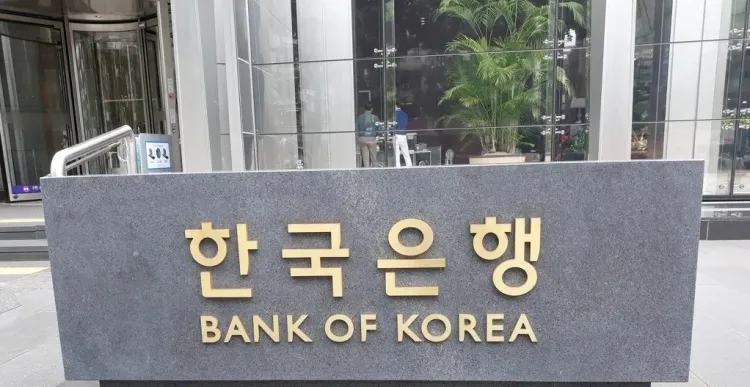Have South Korean Banks' Lending Rates Decreased in May Amid Monetary Easing?

Synopsis
Key Takeaways
- Loan rates in South Korea have dropped to 4.17% as of May.
- This marks the sixth month of continuous decline.
- The Bank of Korea is actively working to stimulate economic growth through monetary easing.
- Restrictions on kimchi bonds have been lifted to improve liquidity.
- The next rate-setting meeting is scheduled for July 10.
Seoul, June 30 (NationPress) Loan rates from banks have experienced a decline for the sixth consecutive month in May, as reported on Monday, due to the central bank's ongoing monetary easing cycle. The average lending rate for new loans stood at 4.17 percent last month, reflecting a decrease of 0.2 percentage points from April, according to data from the Bank of Korea (BOK).
This rate has been on a steady downward trend since December, as indicated by the Yonhap news agency.
Additionally, the rate that banks offer on deposits has also fallen by 0.08 percentage points to 2.63 percent, marking the eighth consecutive month of decline.
Consequently, the spread between banks' lending and deposit rates widened to 1.54 percentage points in May, compared to 1.48 percentage points in the previous month, according to the data.
The BOK initiated its monetary easing cycle in October, which represents its first policy adjustment since August 2021. It has implemented four cuts to the benchmark interest rate, totaling 1 percentage point through May, to stimulate economic growth amid weak domestic demand.
The BOK is set to convene its next rate-setting meeting on July 10.
In a related development, the South Korean central bank announced on Monday that it has lifted restrictions on local entities investing in kimchi bonds, which are foreign currency-denominated bonds meant for domestic use, in a bid to enhance foreign exchange liquidity.
Starting Monday, foreign exchange institutions—including foreign exchange banks, securities firms, and insurance companies—can now invest in kimchi bonds without restrictions, as per the Bank of Korea (BOK).
This restriction was first imposed in 2011 to avoid debt issuance aimed at circumventing currency loan regulations and to limit excessive domestic investment in foreign currency debt.
However, growing imbalances in foreign exchange (FX) supply and demand have prompted calls for regulatory easing.
"We anticipate that this measure will alleviate the imbalance in foreign exchange supply and demand, thereby enhancing foreign currency liquidity and reducing downward pressure on the Korean won," stated a BOK official.








